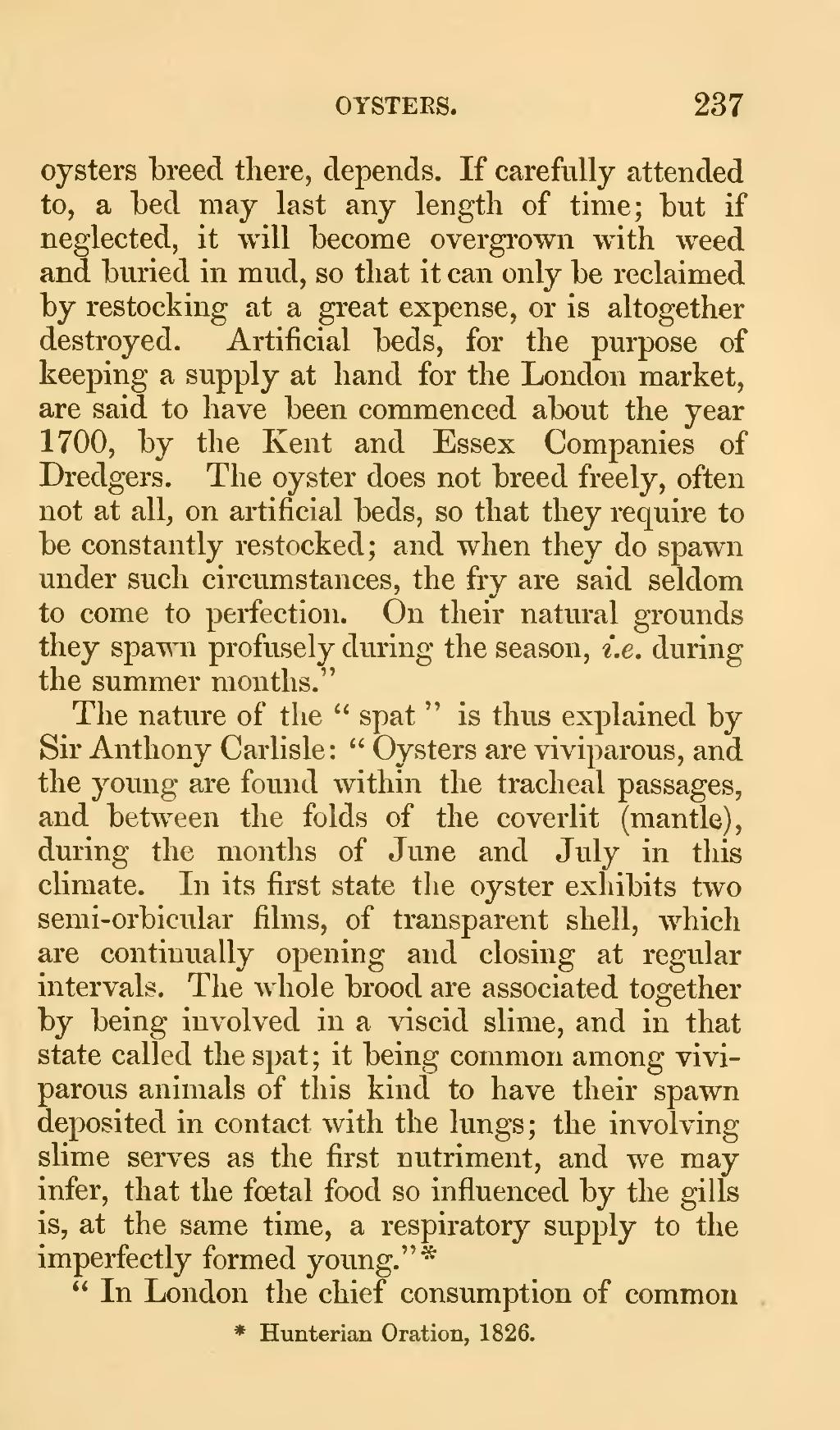oysters breed there, depends. If carefully attended to, a bed may last any length of time; but if neglected, it will become overgrown with weed and buried in mud, so that it can only be reclaimed by restocking at a great expense, or is altogether destroyed. Artificial beds, for the purpose of keeping a supply at hand for the London market, are said to have been commenced about the year 1700, by the Kent and Essex Companies of Dredgers. The oyster does not breed freely, often not at all, on artificial beds, so that they require to be constantly restocked; and when they do spawn under such circumstances, the fry are said seldom to come to perfection. On their natural grounds they spawn profusely during the season, i.e. during the summer months."
The nature of the "spat" is thus explained by Sir Anthony Carlisle: "Oysters are viviparous, and the young are found within the tracheal passages, and between the folds of the coverlit (mantle), during the months of June and July in this climate. In its first state the oyster exhibits two semi-orbicular films, of transparent shell, which are continually opening and closing at regular intervals. The whole brood are associated together by being involved in a viscid slime, and in that state called the spat; it being common among viviparous animals of this kind to have their spawn deposited in contact with the lungs; the involving slime serves as the first nutriment, and we may infer, that the fœtal food so influenced by the gills is, at the same time, a respiratory supply to the imperfectly formed young."[1]
"In London the chief consumption of common
- ↑ Hunterian Oration, 1826.
